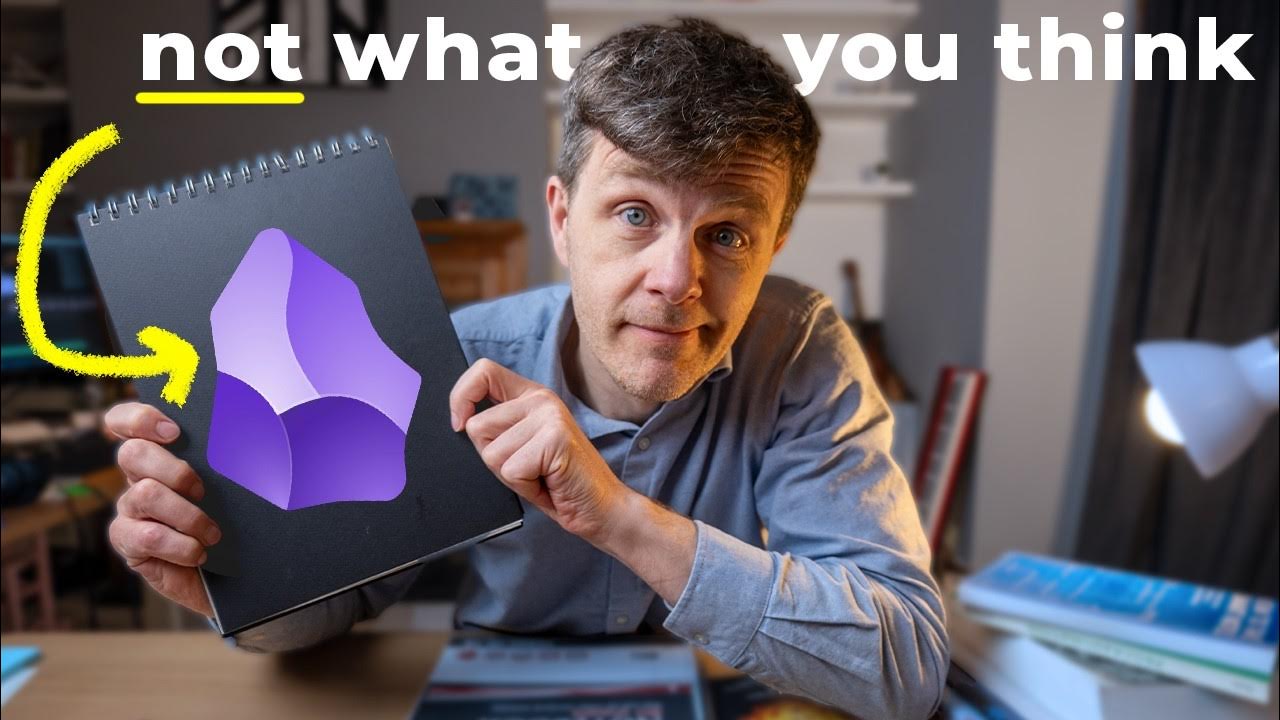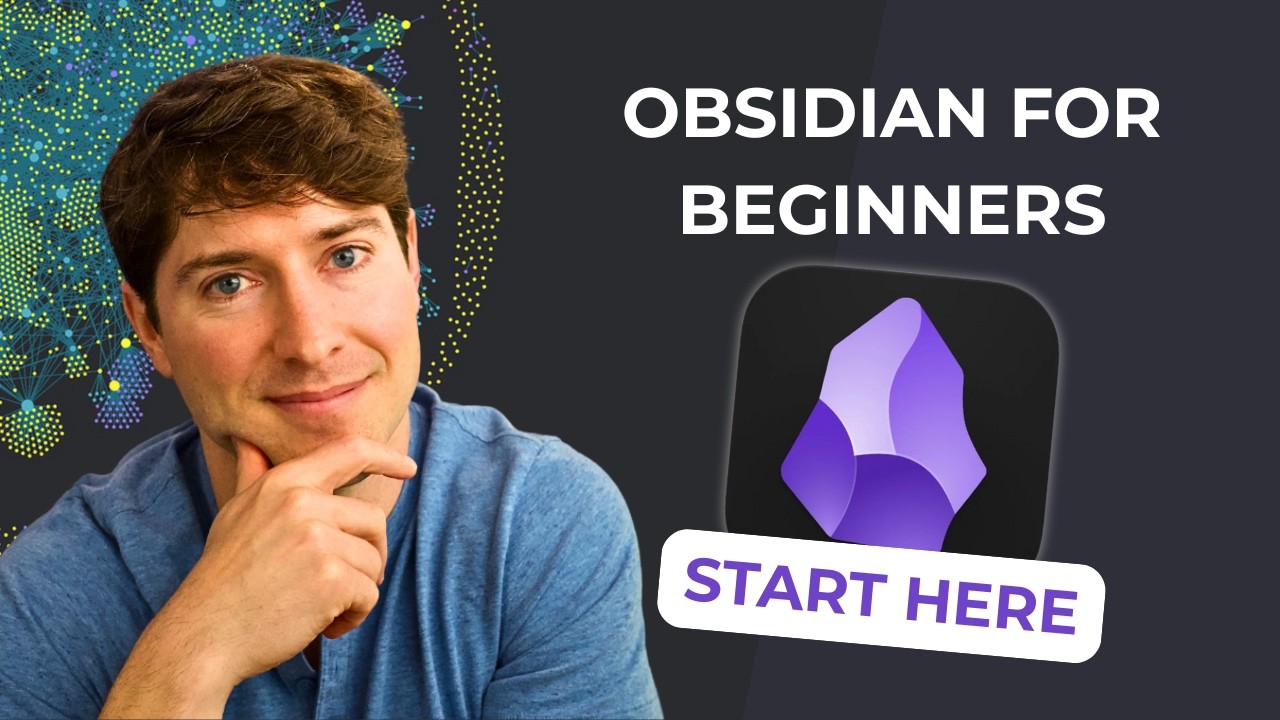Obsidian Quick Start Guide (2024)
Summary
TLDRThis tutorial introduces users to Obsidian, a powerful knowledge management tool. It covers the essentials of capturing, linking, and refactoring notes within the app. The video offers a free 5-day email course on personal knowledge management (PKM) to help beginners. The host guides viewers through creating a new vault, switching themes, and navigating the interface. Emphasis is placed on the importance of note-taking for idea processing and memory retention. The tutorial also demonstrates linking concepts within Obsidian and refactoring notes for better organization. A personal vault example illustrates how interconnected ideas can be visualized, encouraging a simple start and gradual system development tailored to individual needs.
Takeaways
- 🌟 Get started with Obsidian by mastering three key skills: capture, linking, and refactoring.
- 🎁 Receive a free 5-day email course on personal knowledge management (PKM) by signing up through the provided link.
- 💻 Obsidian's interface initially presents a Vault management screen, where you can create a new Vault for organizing your notes.
- 📁 Understand that Obsidian stores data as plain text files, which can be accessed and managed through your computer's file system.
- 🖊️ Capture notes by writing down your thoughts and ideas, which helps in processing and retaining information more effectively.
- 🔗 Linking in Obsidian is done by creating Wiki links within notes, which helps in connecting related concepts and ideas.
- 🔄 Refactoring in Obsidian involves reorganizing and rewriting notes to improve their structure and clarity.
- 📓 Use the command palette (Control/Command + P) to access commands quickly and to discover keyboard shortcuts within the app.
- 📚 As your Vault grows, start thinking about organizing your notes, perhaps by introducing folders, tags, or other systems that suit your workflow.
- 🌐 Explore the graph view in Obsidian to visualize the connections between your notes, which can help in understanding the relationships between different ideas.
- 📈 Join the free PKM Kickstart email course for deeper insights into taking high-quality notes and managing your personal knowledge effectively.
Q & A
What are the three key concepts introduced for getting started with Obsidian?
-The three key concepts introduced for getting started with Obsidian are capture, linking, and refactor.
What is a Vault in Obsidian and how is it created?
-A Vault in Obsidian is a collection of notes and folders that are stored locally on your computer. It is created by clicking 'create' in the Vault management screen, naming the Vault, browsing to select a location on your computer, and then selecting 'create'.
How can you change the theme from dark mode to light mode in Obsidian?
-You can change the theme from dark mode to light mode in Obsidian by using the command pallet (Control P or Command P on Mac), typing 'light mode', and hitting enter.
What is the purpose of the command pallet in Obsidian?
-The command pallet in Obsidian is a quick way to access any command within the app and also serves as a keyboard shortcut reference guide.
How are notes created in Obsidian?
-Notes in Obsidian are created by going to the upper left-hand corner, using the command pallet, or pressing Control N or Command N to create a new note titled 'Untitled'.
What is the significance of the graph view in Obsidian?
-The graph view in Obsidian shows the connections between different notes, helping users visualize the relationships and navigate through their knowledge base.
How do you create a link to another note in Obsidian?
-In Obsidian, you create a link to another note by highlighting the text, pressing the left bracket key twice to create a Wiki link, and then typing the name of the note you want to link to.
What does refactoring mean in the context of Obsidian?
-Refactoring in Obsidian refers to the process of rewriting and restructuring notes to better organize and connect related ideas and information.
How can you extract a section of a note to create a new note in Obsidian?
-You can extract a section of a note to create a new note in Obsidian by highlighting the text, right-clicking, and selecting 'extract current selection', then choosing to merge it into an existing note or creating a new note.
What advice does the presenter give for organizing notes in Obsidian as a beginner?
-The presenter advises beginners to start simple, not to over-engineer the organization, and to begin with capturing and linking notes. Once there are a significant number of notes, then consider how to organize them with folders, tags, or other systems.
Outlines

Cette section est réservée aux utilisateurs payants. Améliorez votre compte pour accéder à cette section.
Améliorer maintenantMindmap

Cette section est réservée aux utilisateurs payants. Améliorez votre compte pour accéder à cette section.
Améliorer maintenantKeywords

Cette section est réservée aux utilisateurs payants. Améliorez votre compte pour accéder à cette section.
Améliorer maintenantHighlights

Cette section est réservée aux utilisateurs payants. Améliorez votre compte pour accéder à cette section.
Améliorer maintenantTranscripts

Cette section est réservée aux utilisateurs payants. Améliorez votre compte pour accéder à cette section.
Améliorer maintenantVoir Plus de Vidéos Connexes

Como o Obsidian funciona

Obsidian vs Kortex: What's the difference?

Obsidian: The Most Powerful Learning Technology in History?

Pomodoro Timer: Improve Your Productivity With This Obsidian Plugin

Obsidian for Beginners: Start HERE — How to Use the Obsidian App for Notes

Obsidian vs. Logseq - A High Level Overview
5.0 / 5 (0 votes)
